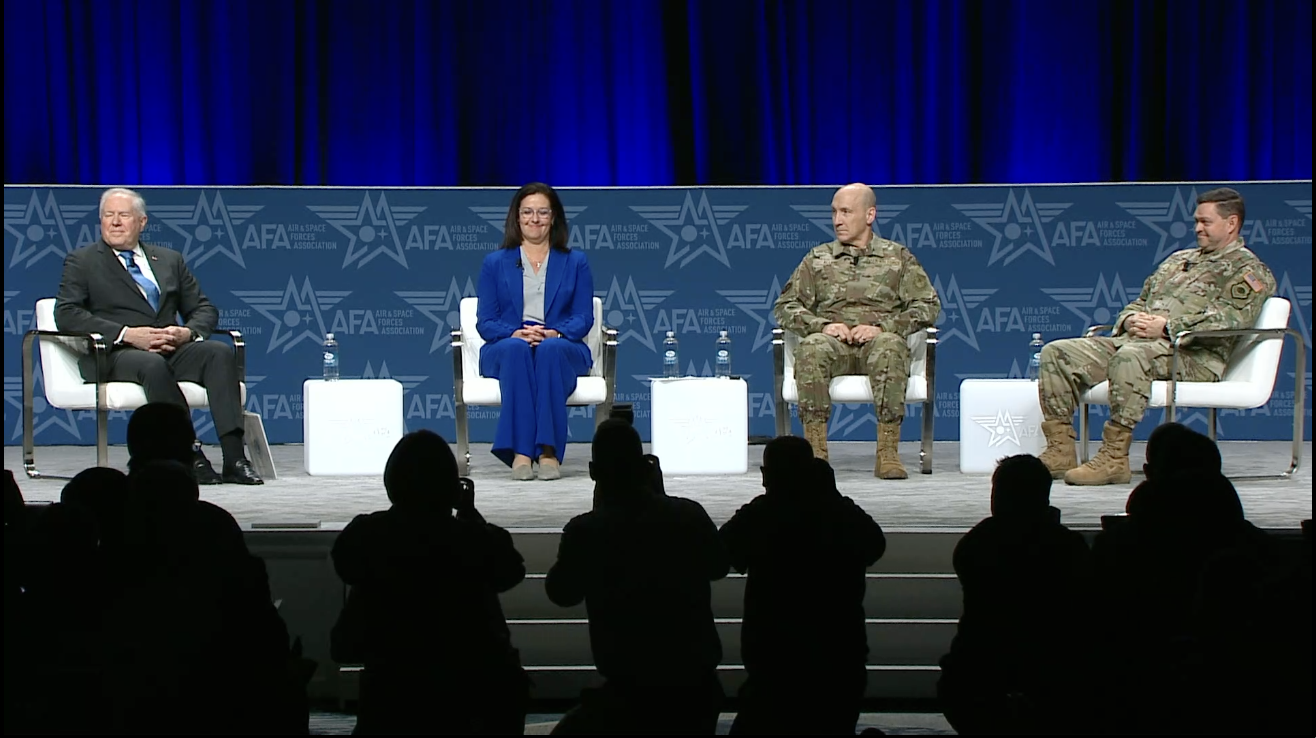WASHINGTON — The Department of the Air Force on Feb. 12 unveiled a long-term vision to revamp personnel, operations, and technology efforts with the goal of reshaping the Air Force and newly formed Space Force to concentrate resources squarely on strategic competition with China.
Air Force Secretary Frank Kendall said priorities have to change for the era of great power competition. Service leaders discussed a planned series of initiatives during a panel at the Air & Space Forces Association’s Warfare Symposium in Aurora, Colorado.
Great power competition generally refers to the geopolitical rivalry between the United States and China. This competition encompasses not just military might, but also economic influence and technological advancement. China’s rapid military modernization and assertive foreign policy have placed it at the forefront of this competition, prompting the U.S. to re-evaluate its own strategic posture.
Kendall said the Air Force and Space Force will streamline operations and prioritize critical areas like technology integration, cyber expertise, and software development, all to ensure the Air Force and Space Force are prepared for the complex challenges of the 21st century.
The announcement comes as the Pentagon seeks to move on from legacy structures optimized for counterterrorism operations that dominated since 9/11, and prioritize what it now labels “integrated deterrence†against major rivals like China and Russia.Â
China’s growing arsenal of long-range missiles and anti-satellite weapons, in particular, threatens American supremacy in areas like air combat and space-enabled intelligence, Kendall has pointed out.
He described the overhaul as a multi-year endeavor but said there is no time to waste. “We are out of time,†Kendall stressed.
Space Force priorities
Chief of Space Operations Gen. Chance Saltzman compared the journey ahead for the Space Force to that of a merchant marine that needs to be more like a navy.
Speaking at the AFA conference, Saltzman said the service will introduce training and education programs tailored for an area when space is a contested, not a benign, environment.
In decades past, he said, “the space domain was relatively secure, it was pretty safe. And our job was to provide services to the joint force from that domain … And now we find ourselves in a contested domain. We have to be able to secure the domain so that we can continue to use it and protect the joint force from space-enabled targeting.â€
Training programs have to change, said Saltzman. “We have to be able to give our people the training, the education, the experiences that they’re going to need to be successful in the high tech environment that they’re going to face.â€
The Space Force will redesign its officer training course so programs for satellite operations, cyber operations and intelligence are not separated into stovepipes. “If the satellite operator doesn’t understand the networks that disseminate the data and doesn’t understand how to provide that data in a threat environment, they are not going to be successful,†said Saltzman.
On the procurement side, there will be greater focus on resiliency against threats, he said. “The merchant marine didn’t have the right equipment to be a navy. Likewise, the systems that we’ve built were designed for a benign environment. We have to redesign our architectures, redesign the systems so they are resilient against an adversary, they have to be resilient under attack.â€
‘Space Futures Command’
Saltzman said the Space Force will establish a Space Futures Command as a new field command to develop concepts, conduct experimentation and wargames.
This new command also will look at what technologies should be developed or acquired to defend space, asking questions such as what type of space domain awareness will be needed for cislunar space, beyond Earth’s orbit.Â
“We are going to build a wargaming center that helps us evaluate technologies and experiment with new technologies,†he said.Â
Related
Read the original article here



